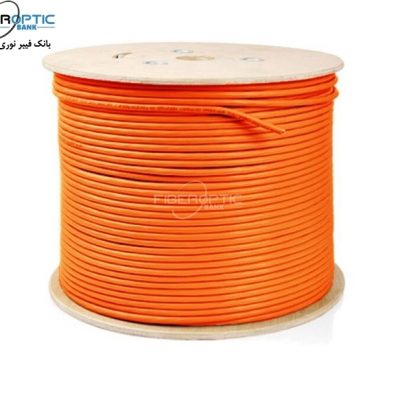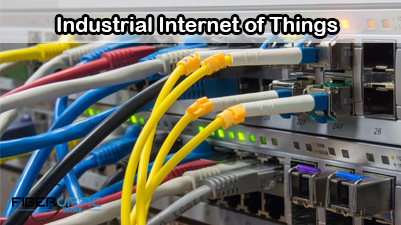Developing Your Network
The COVID-19 pandemic brought the importance of robust, reliable Internet connectivity into sharp focus. People needed it to work remotely, learn virtually, access their doctors with telehealth, and connect with family and friends across long distances through videoconferencing. The crisis also surfaced pre-existing inequalities in access to reliable Internet – making addressing the “digital divide” a national priority.
Bridging the digital divide is a key part of the bipartisan infrastructure bill President Biden signed into law in the fall of 2021. That bill included $65 billion in federal funds to improve high-speed Internet access and affordability across the country, including state-level grants for broadband projects, private activity bonds and support for “middle mile” infrastructure that helps connect local, smaller Internet providers to larger hubs.
One way to help close the digital divide and to bring Internet to rural and underserved parts of the country is through community broadband; Internet that is owned and/or operated by municipalities rather than a privately owned service provider. Cities and towns that have built such networks are already seeing dividends, such as in Chattanooga, where in 10 years municipal broadband has delivered economic and social benefits estimated at $2.6 billion.
Starting a community broadband initiative is a complex process, and there are a lot of considerations for municipal managers thinking about this path. Here are six things to think about as you evaluate whether community broadband is right for your community:
1. Start with an economic feasibility survey
Proving there is a business case for the service will always be the starting point for community broadband. A feasibility study will help determine baseline connectivity and determine areas of potential investment in infrastructure. Favorable results from the survey will also help drive momentum for the project as a whole.
It’s also an opportunity to see what community needs your municipal networks will help address. Is there a large student population dependent on online education? An influx of people working remotely? Are you trying to attract a major business hub to the region, one that will need strong local Internet connectivity such as a data center? All these questions will help you shape the kind of network and partnership you’ll need down the road.
2. Consider the funding source
All aspects of building a community-run broadband network, from studies, to marketing, to building and running the operation, will need funding. The good news is that there is money available for these initiatives. One is the aforementioned infrastructure bill, and the $42 billion in that legislation that will go to the Broadband Equity, Access and Deployment program, as well as other funds. The other potential source is the pandemic relief fund in the American Rescue Plan Act (ARPA), which included capital asset investment money that can be used for critical infrastructure projects like broadband. Most federal or state funding programs won’t cover 100% of costs though so matching funds will be required. Many times, those funds can be sourced through existing municipal reserve funds, by issuing new municipal bonds, or by forming public-private partnerships with an internet service provider that can self-fund. Which funding source makes sense for you may differ depending on your situation, the nature of the project, and the state where your community is located.
3. Build a community engagement strategy
The feasibility study, the funding, and the partner are all part of an overall strategy in bringing municipal broadband to your community. A strong marketing plan is also necessary to build support for the initiative, as well as to get an accurate sense of local businesses and homeowners who would take advantage of the network. For example, an accurate sense of subscriber take rate, especially in rural areas, will be critical for the feasibility study mentioned above. Showing strong pre-signups will tell potential partners there is revenue in the project from the beginning. Getting local politicians and community leaders on board to lead the charge will also help, especially if there is expected pushback or other headwinds. Another best practice when engaging the community is to set expectations on the timeline and construction process. Broadband projects take years to complete and involve trenching along roads, occasional road closures, and even disrupting a homeowner’s property in the right-of-way. A little expectation management will save a lot of grief in the future.
4. Consider what you want to own and operate
Once you’ve made the business case and decided to move forward with a community broadband project, there are a number of paths to take. A municipality can completely build, own, and operate their own network (Chattanooga’s for example, was built by the city-owned utility EPB). But there are other models, including where communities build the network then contract out the day-to-day operations; the reverse, where a specialty firm builds the network and the town runs it; or even a partnership with an established Communications Service Provider, or CSP.
There is also a model in Vermont involving Communications Union Districts, where several communities band together to build a shared infrastructure. What’s right for your city or town will depend on the needs and available resources and funding.
5. Connect with the right partner
Few municipalities will have the resources and knowledge to build a complex communication network themselves. Finding a partner – particularly one with deep fiber-to-the-premise (FTTP) experience will be key. In the current moment, there are a number of additional challenges such as difficulty finding specialized labor. A less established company could mean fewer relationships with contractors, etc. while larger firms will have a better track record, giving you the best chance of getting the project done on time and on budget. Someone who has been around the industry for a while is also more likely to stay when the project is over. You will want a reliable partner that can respond to your community needs even after the construction checks have cleared.
And finally …
6. Act now! The time is right
Now is the time to start exploring options and determining if municipal broadband is right for you. Funding is available for economic feasibility surveys and infrastructure projects, that may not be there in the future. Additionally, the need for strong, reliable Internet connectivity in traditionally underserved areas has never been greater. From people moving away from cities to work remotely, to increased online educational opportunities, to communities’ ability to attract businesses and developments, connectivity is the thread that binds everything together.
Source: corning
















[ratings]